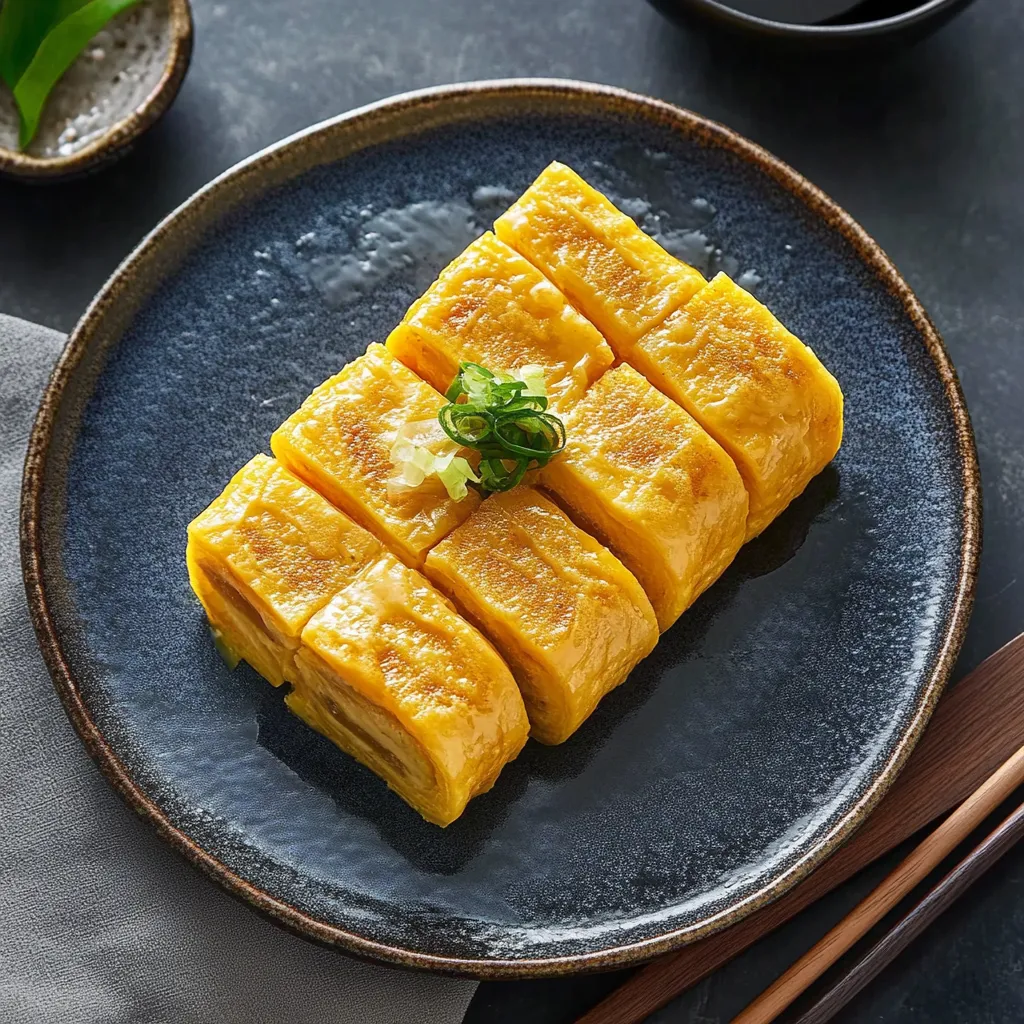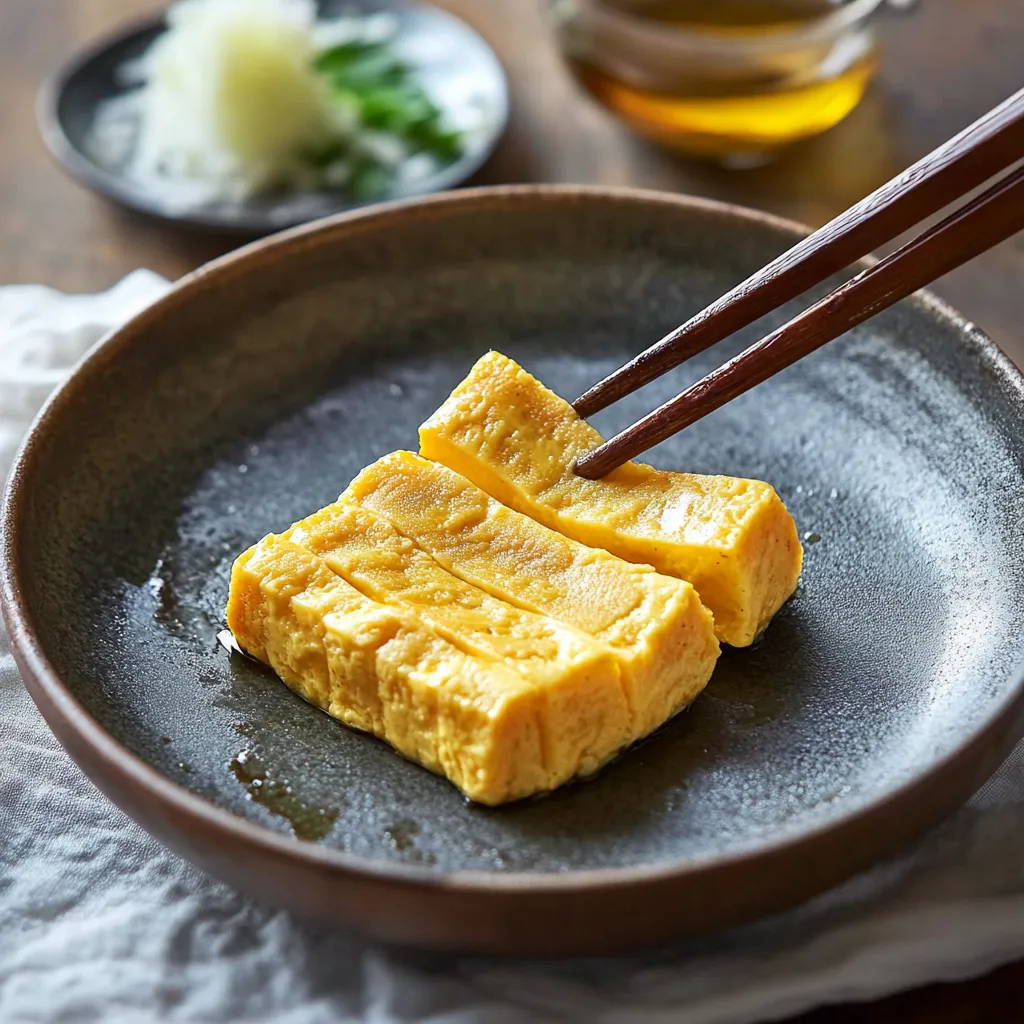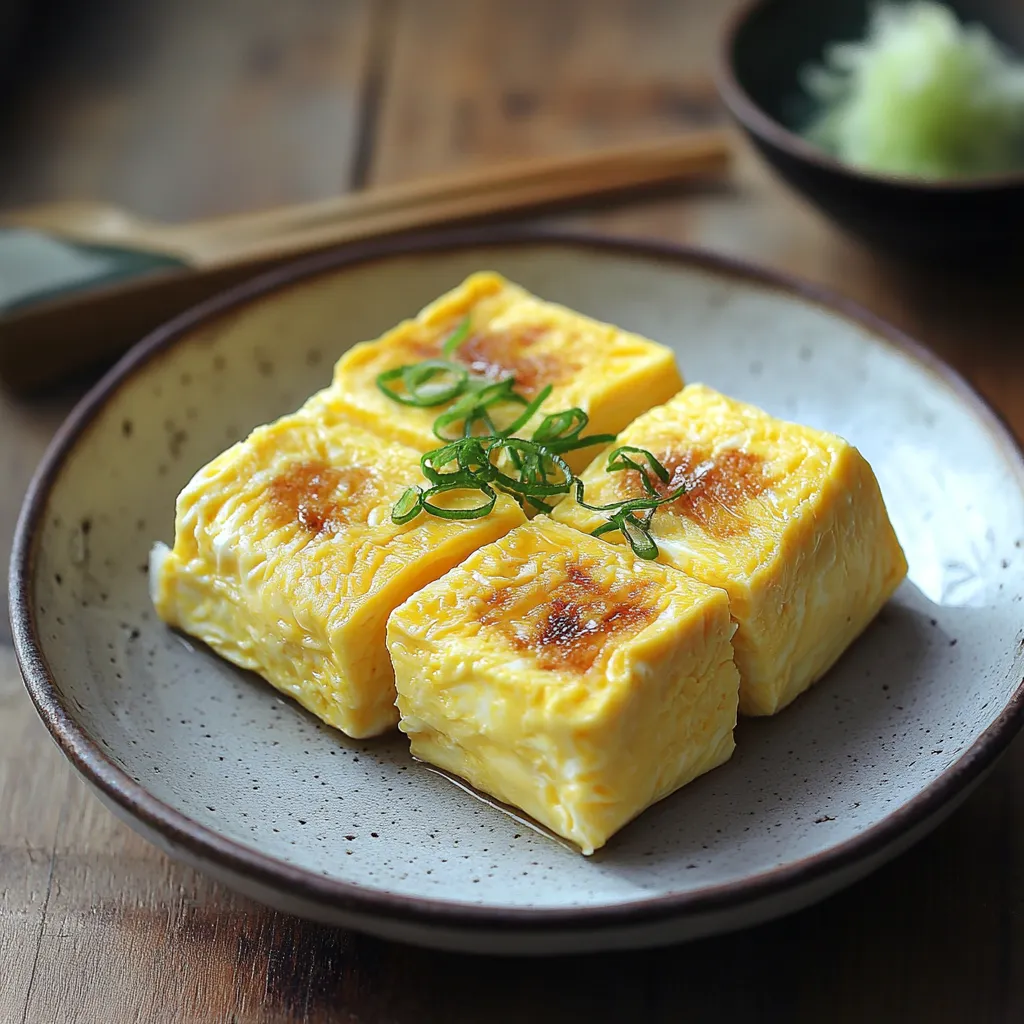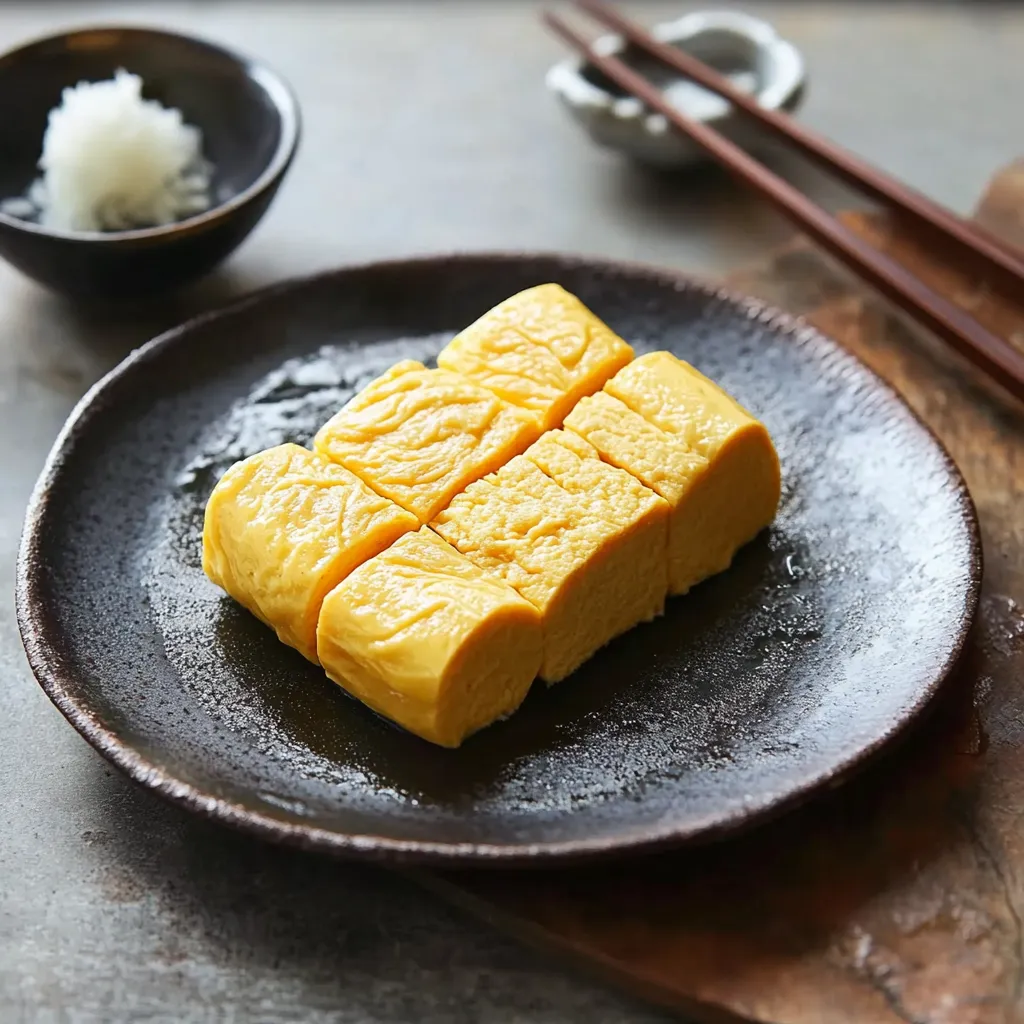 Pin it
Pin it
Making tamagoyaki is all about finding the sweet spot between perfect heat, precise timing, and smooth technique. After spending countless hours perfecting this Japanese rolled omelet, I've come to realize its true charm isn't just in what goes into it, but in the peaceful rhythm of building those beautiful, sunny layers. Every fold adds to the previous one, resulting in something that looks amazing and tastes even better.
I made this for a Japan-themed morning get-together last Sunday, and my friends couldn't take their eyes off the process as each new layer took shape. What's my trick? Knowing exactly how heat and timing work together to get those custardy, perfect layers just right.
Key Ingredients and Shopping Advice
- Eggs: Grab eggs that sat out a bit for smoother mixing and cooking.
- Mirin: Don't skimp here - better quality means better taste.
- Dashi: Nothing beats making it yourself, but the quick version works when you're rushed.
- Soy Sauce: Get the Japanese kind for that perfect umami-salt balance.
 Pin it
Pin it
Getting Ready Like a Pro
- Mix your eggs:
- Break eggs carefully and stir them lightly using chopsticks or a fork until just blended. Slowly add your sugar, mirin, and soy sauce while cutting through the mixture.
- Run it through a strainer:
- Pour the egg mix through a fine mesh strainer for that ultra-smooth feel.
 Pin it
Pin it
Getting the Heat Just Right
How hot your pan gets makes all the difference. Go with medium-low fire and check by dropping a tiny bit of egg mixture in - it should sizzle softly without cooking instantly. Feel free to turn the heat up or down as you cook.
Building One Layer at a Time
Add a thin coat of egg mix to your pan. When it starts setting, carefully use chopsticks or a spatula to lift one edge and roll it over. Move the roll back to where you started and add more egg mix, making sure each new layer connects smoothly with what you've already rolled.
Pro Kitchen Tricks
The Dish's Background
In Japan, tamagoyaki shows up everywhere from breakfast tables to fancy sushi spots. Chefs see it as a true test of skill that needs total focus and precision. Different regions make it their own way - some folks like it sweeter while others go for more savory versions.
How to Serve It Beautifully
- Put it next to some rice, miso soup, and pickles for a classic morning meal.
- For something more current, cut thin slices and arrange them at an angle on a long plate with some grated daikon and soy sauce.
Perfecting Heat and Timing
Keep the heat low enough to avoid browning but hot enough that each layer sets quickly. Give each layer about 30-45 seconds to firm up, and let your finished roll rest for five minutes before cutting into it. This tastes best warm or at room temp for maximum flavor.
Changing With the Seasons
- Spring: Toss in some fresh shiso leaves.
- Summer: Mix in chopped tomatoes or fresh corn kernels.
- Fall: Add some mushrooms or chrysanthemum greens.
- Winter: Mix in spinach or seaweed for deeper flavors.
Learning Opportunities
 Pin it
Pin it
Making tamagoyaki helps you learn cooking basics like controlling heat, understanding how eggs firm up, and training your hands through repeated motions. These skills will make you more confident and capable throughout your cooking journey.
Stocking Your Japanese Ingredients
- Get some Japanese soy sauce, mirin, and sake for true flavors.
- Have kombu and katsuobushi on hand to make fresh dashi.
- Try different seaweeds to garnish and boost flavor.
Final Thoughts Worth Sharing
What makes tamagoyaki so special is how basic yet precise it is. Each fold builds more flavor and shows off your skill, highlighting what makes Japanese cooking so elegant. Whether it's your breakfast highlight or part of a fusion dish, tamagoyaki teaches you patience, technique, and how beautiful simple ingredients can be.
I've made this countless times, and I've learned that tamagoyaki isn't just food - it's a path to better cooking. Getting good at this doesn't just add another dish to your arsenal; it helps you appreciate the peaceful process of creating something truly special.
Frequently Asked Questions
- → Is a rectangle pan necessary for tamagoyaki?
- You can use a small round nonstick pan instead, but the rectangular pan makes it easier.
- → Can I skip dashi in tamagoyaki?
- Of course! Dashi adds depth, but you can make a simpler version without it.
- → How can I stop my tamagoyaki from browning?
- Use a medium-low heat and cook gently to keep the eggs bright yellow.
- → Can the sweetness be adjusted?
- Definitely, just cut back on the sugar for a less sweet taste.
- → How should I store tamagoyaki leftovers?
- Keep them in an airtight box in the fridge for up to 4 days. Let them sit out a bit before serving.
